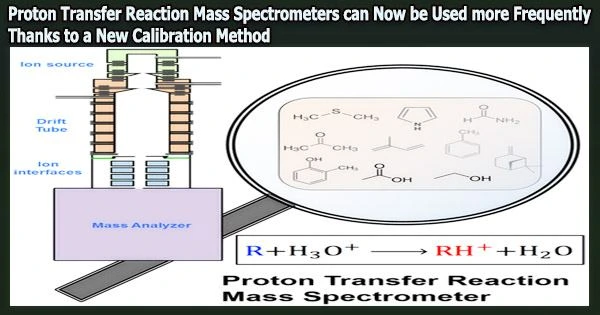In order to enhance the quantification and comparability of proton-transfer reaction mass spectrometry data, NPL and the University of Utrecht in the Netherlands have worked together to develop novel SI-traceable gas reference materials and a quick calibration method. The team’s research has recently been published in Atmospheric Measurement Techniques.
Proton transfer reaction mass spectrometers (PTR-MS) allow the simultaneous measurements of numerous volatile organic compounds (VOCs) in real-time at trace levels without any sample pre-treatment.
As a result, it is used in many different applications, ranging from disease detection to atmospheric monitoring. The technology has advanced over the past two decades, and with the proliferation of datasets and the number of instrument manufacturers, there is an increasing demand for precise calibration and enhanced measurement comparability.
Spectrometers are scientific instruments that are used to measure the intensity of light as a function of its wavelength. They work by separating light into its component colors using a prism or a diffraction grating, and then measuring the intensity of each color.
The large number of VOCs detectable with PTR-MS means it is impractical to have a calibration gas standard or standards for all observable compounds.
However, if the mass dependent ion transmission rate is precisely determined, it is possible to offer quantitative measurements for compounds without the need for particular calibration materials.
The implementation of this new SI traceable reference material with the fast calibration method described in Holzinger et al (2019) is the most pragmatic approach to directly addressing the accuracy and comparability of PTR-MS measurements and enabling the deployment of PTR-MS for long-term atmospheric monitoring.
Dr. David Worton
Since many PTR-MS instruments use advanced ion optics to improve sensitivity, which causes deviations at low masses and poor tuning and aging of the ion detection system, which causes deviations at high masses, this must be done experimentally because the transmission of PTR-MS instruments cannot be accurately predicted from theory.
The mass dependent transmission can be calibrated and retrieved using proven techniques from earlier fieldwork. However, due to their slowness and laborious nature, they have a low calibration frequency, which restricts the use of PTR-MS to just brief discrete deployments.
Within the Aerosols, Clouds and Trace Gases Infrastructure (ACTRIS; www.actris.eu) project there is an interest to establish PTR-MS as a technique for long-term atmospheric monitoring.
To make this possible, researchers at the University of Utrecht have created a fast calibration method that, when combined with the novel SI-traceable gas reference material created by the Gas Metrology Group at NPL, can quickly and precisely retrieve the mass dependent transmission.
Dr. David Worton, Principal Research Scientist in the Gas Metrology Group at NPL, states, “The implementation of this new SI traceable reference material with the fast calibration method described in Holzinger et al (2019) is the most pragmatic approach to directly addressing the accuracy and comparability of PTR-MS measurements and enabling the deployment of PTR-MS for long-term atmospheric monitoring.”
Professor Rupert Holzinger at the University of Utrecht, Netherlands states, “This new SI traceable Gas Standard allows exploiting the full potential of the PTR-MS technique: semi-quantitative untargeted analysis of complex mixtures across long time scales and different platforms. I expect scientific advances from this technical improvement.”
















